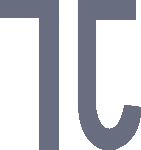Last time, I shared with you some of my learning process in realizing that we all ‘cheat’, and have to find ways to overcome or circumvent our own weaknesses and shortcomings. Here are the first three (and a half) tools I’d like to share with you, which have become invaluable to me on a daily basis.
Email – Google Inbox
I am a big fan of Inbox Zero. At one point I had somewhere around 15,000 emails staring at me from my inbox, but now I strive for an empty inbox and dump everything else into a searchable archive. In my pursuit of Inbox Zero, I recently discovered Google Inbox. This truly game-changing app is redefining email. It really helps with defining emails as tasks (rather than random blobs of information), and pulls in a wealth of context information around each email. My favorite feature is the ability to ‘snooze’ emails until a preset day/time, so that I can keep my inbox lean and mean, and get important tasks right back up in front of me when I need them. I previously used Boomerang for this, but now I only use Boomerang for it’s “Send Later” function.
Schedule – Sunrise Calendar
In spite of the fact that it was recently acquired by Microsoft, Sunrise Calendar continues to be my go-to daily calendar. No other option that I’ve found has this level of integration with so many data sources, and their mobile app is spectacularly powerful and simple to use. I currently use Sunrise integrated with my 12+ Google Calendars, Asana tasks, Evernote reminders, Tripit itineraries, and Facebook events. The also have a cool meeting-scheduling system called Sunrise Meet, which makes it quick and easy to find mutual open time slots for planning meetings.
Project Management/Task Lists – Asana
After trying Basecamp, Google Tasks, Wunderlist, and Remember The Milk, I finally settled on Asana as my go-to project management and task tracking system. It is free (premium features available), and works equally well for managing a grocery list as it does for managing a $300,000 commercial painting project. It has too many features to list here, but for me one of it’s best features is the way it pairs simple task tracking with team communication/collaboration.

